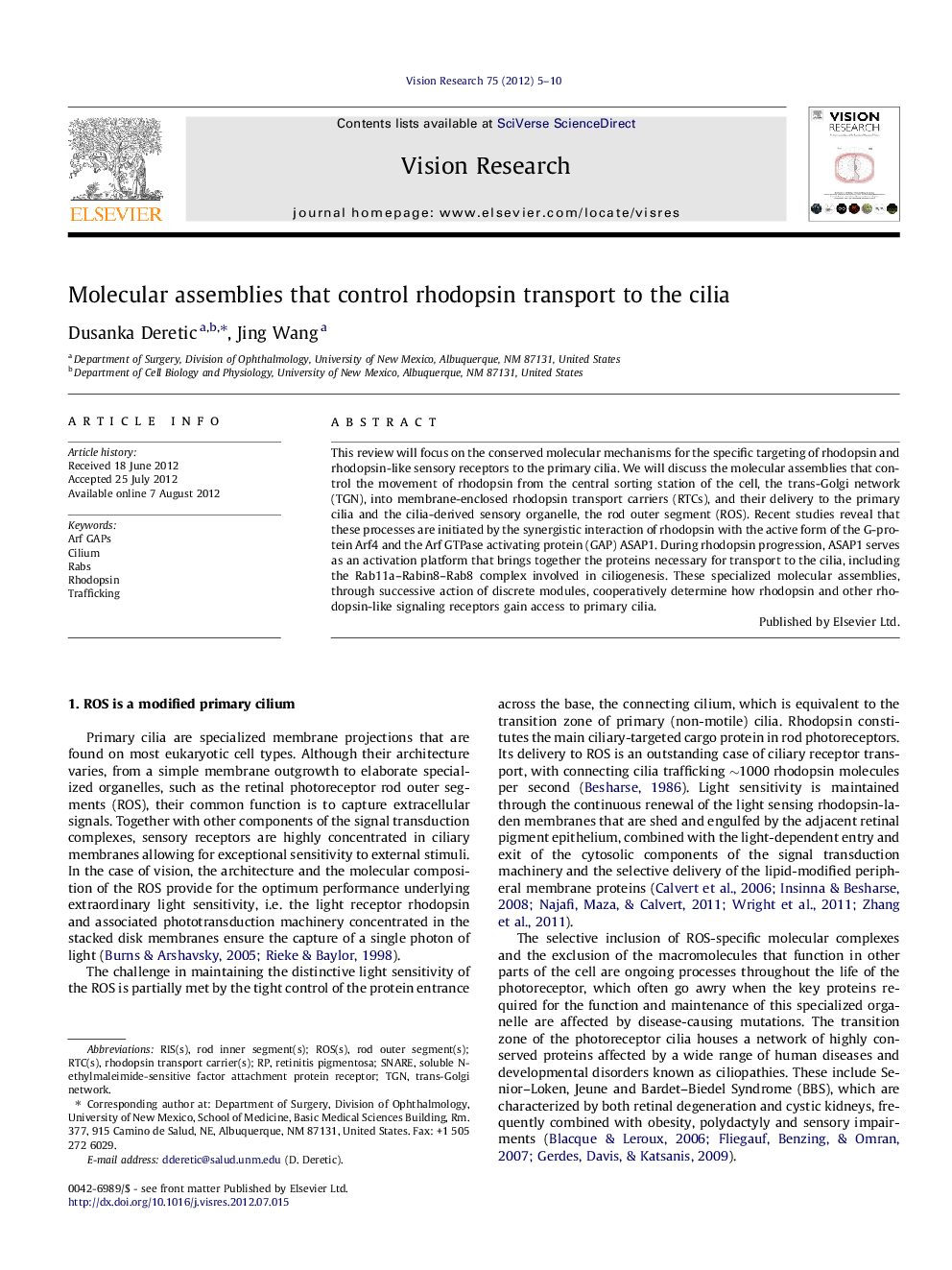| Article ID | Journal | Published Year | Pages | File Type |
|---|---|---|---|---|
| 4033863 | Vision Research | 2012 | 6 Pages |
This review will focus on the conserved molecular mechanisms for the specific targeting of rhodopsin and rhodopsin-like sensory receptors to the primary cilia. We will discuss the molecular assemblies that control the movement of rhodopsin from the central sorting station of the cell, the trans-Golgi network (TGN), into membrane-enclosed rhodopsin transport carriers (RTCs), and their delivery to the primary cilia and the cilia-derived sensory organelle, the rod outer segment (ROS). Recent studies reveal that these processes are initiated by the synergistic interaction of rhodopsin with the active form of the G-protein Arf4 and the Arf GTPase activating protein (GAP) ASAP1. During rhodopsin progression, ASAP1 serves as an activation platform that brings together the proteins necessary for transport to the cilia, including the Rab11a–Rabin8–Rab8 complex involved in ciliogenesis. These specialized molecular assemblies, through successive action of discrete modules, cooperatively determine how rhodopsin and other rhodopsin-like signaling receptors gain access to primary cilia.
Graphical abstractFigure optionsDownload full-size imageDownload high-quality image (66 K)Download as PowerPoint slideHighlights► Molecular assemblies involved in cilia structure and function are discussed. ► Photoreceptor rod outer segment (ROS) is a modified primary cilium. ► Rhodopsin regulates ROS assembly through the G-protein Arf4 and its GAP ASAP1. ► Arf4 and ASAP1 recognize rhodopsin VxPx and the FR targeting signals, respectively. ► ASAP1 coordinates the proteins necessary for the ciliary transport of rhodopsin.
